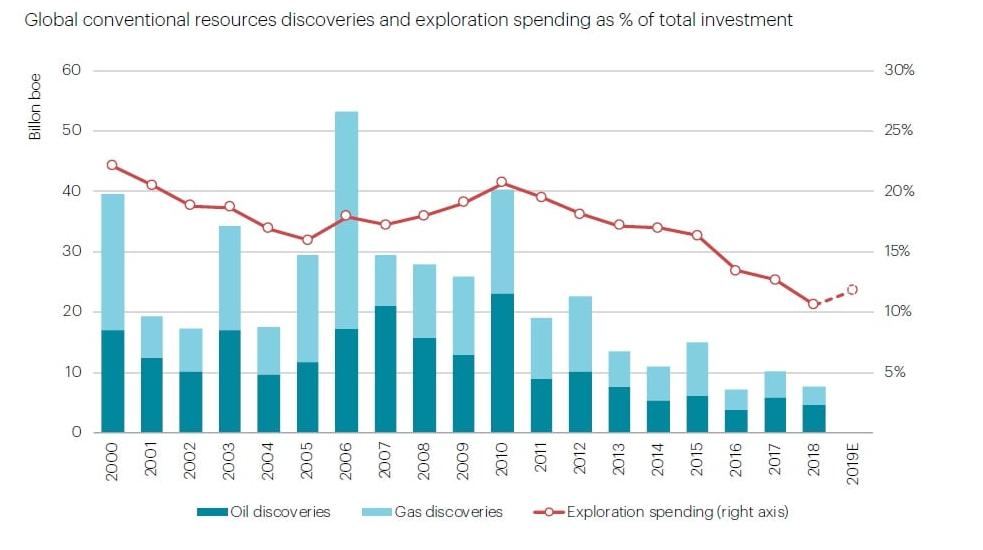Energy Prices Continue to Rise
Oil prices continued their rise yesterday, amid forecasts that climbing natural gas prices may drive a switch to oil. Oil prices have risen more than 15% since early September, largely due to the surging demand for natural gas and the search for cheaper substitutes.
Natural Gas prices in Europe and Asia are at record highs, while U.S. prices have doubled this year.
But what has been driving energy prices up?
Growing Demand and Supply issues
As the world economy recovers, demand for energy is growing.
Even though demand for oil is surging, OPEC+ producers have not increased supply, and are sticking to their original plan of adding just 400,000 more barrels per day during November.
Oil and Gas suppliers cannot simply increase production upon demand. Increasing supply requires time and investment. New discoveries may take years to develop and lack of investment in recent years has impacted growth and the lack of new developments will inevitably impact the supply.
Another factor affecting the supply are environmental concerns, as energy companies have come under pressure from eco organisations and anti-fossil fuel activists.
Green party members are winning more seats in parliaments, particularly in Europe. As a result, new fossil fuel projects are being frowned upon as seen recently when Shell (RDSB.uk) was denied permission to develop a new gas field in the North Sea as renewable energy is being favoured.
Renewables vs Coal
Renewable energy sources have not been able to fill in the gap, and thus are still not a major factor in the energy mix. This is despite governments committing to carbon free future, pouring billions in ''green energy'' and eco - activists taking centre stage worldwide. High metal prices are also making renewable sources a less attractive option.
In fact, countries have turned to coal snubbing the green alternative. Last week news emerged out of China as the local government ordered coal miners to boost output to counter the energy crunch. In total, 72 coal mines in China will expand output capacity by 100 million tonnes.
Christopher LaFemina, an analyst at Jefferies, noted "The situation is critical in China and India as coal shortages are affecting their economies. Markets in the US and Europe are also very tight. The current environment is clearly unsustainable."
Demand for coal is also on the rise in Europe, where power producers have been forced to ask Russia for more coal to ease an energy crunch. In the US, power plants are on track to burn 23% more coal this year, despite plans to eliminate carbon emissions. Back in August it was reported that US coal exports have reached a two year high.
Australia has also given the go ahead for three coal projects this month alone. Whitehaven Coal and Glencore's (GLEN.uk) will operate the newly approved mines.
Japan is taking an alternative approach to tackling the energy crisis, by restarting nuclear power. Ten years after the Fukushima disaster, Japan's new PM wants to restart nuclear power in the country.
Given those facts, it's very intriguing how the energy crisis will play out and what will the energy mix of leading economies look like this winter and beyond. Leading Economist Ed Yardeni of Yardeni Research summed it up in a research note this week: "Renewables aren't ready for prime time. So instead of a smooth transition, the rush to eliminate fossil fuels is causing their prices to soar and disrupting the overall supply of energy."
Kalin Tsenov
Product Specialist
Kalin Tsenov has a strong research background in economics with specific interests in Geopolitics and its impact on the Financial Markets.
He joined FXCM in 2018 after obtaining a Bachelor's Degree from Leeds Metropolitan University. Initially starting as a Business Analyst in the Payment Solutions department, he is currently a Product Specialist in the Firms Product & Strategy department.




Any opinions, news, research, analyses, prices, other information, or links to third-party sites contained on this website are provided on an "as-is" basis, as general market commentary and do not constitute investment advice. The market commentary has not been prepared in accordance with legal requirements designed to promote the independence of investment research, and it is therefore not subject to any prohibition on dealing ahead of dissemination. Although this commentary is not produced by an independent source, FXCM takes all sufficient steps to eliminate or prevent any conflicts of interests arising out of the production and dissemination of this communication. The employees of FXCM commit to acting in the clients' best interests and represent their views without misleading, deceiving, or otherwise impairing the clients' ability to make informed investment decisions. For more information about the FXCM's internal organizational and administrative arrangements for the prevention of conflicts, please refer to the Firms' Managing Conflicts Policy. Please ensure that you read and understand our Full Disclaimer and Liability provision concerning the foregoing Information, which can be accessed here.